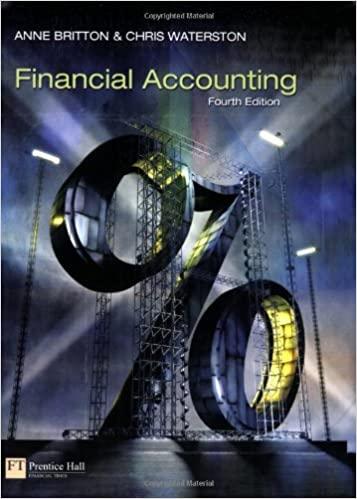- Develop an Event Response List for the scenario. (Use template is available).
- Based on your Event Response List, develop a set of Use Cases for the Scenario. (Use the Fully-Dressed template).



IS 390 - Requirements Analysis and Systems Design Business Scenario: Of The Month Club (OTMC) Consider that a system request has been received to design a new information system for the of the Month Club. A team of systems analysts has interviewed the system requestor and compiled the following interview notes for the proposed new information system: Of-the-Month Club (OTMC) is an innovative young firm that sells memberships to people who have an interest in certain products. People pay membership fees for 1 year and each month receive a product by mail. For example, OTMC has a coffee-of-the-month club that sends members one pound of special coffee each month. OTMC currently has six memberships (coffee, wine, beer, cigars, flowers, and computer games), each of which costs a different amount. Customers usually belong to just one, but some belong to two or more membership plans. When people currently join OTMC, the telephone operator records the name, mailing address, phone number, e-mail address, credit card information, start date, and membership plan(s) (e.g., coffee). A new system would allow new members to self- enroll via the web. Some customers request a double or triple membership plan (e.g., 2 pounds of coffee, three cases of beer). The computer game membership operates a bit differently from the others. In this case, the member must also select the type of game (action, arcade, fantasy/science fiction, educational, etc.) and age level. OTMC is planning to greatly expand the number of memberships it offers (e.g., video games, movies, toys, cheese, fruit, vegetables), so the system needs to accommodate this future expansion of membership plans. OTMC is also planning to offer 3-month and 6-month memberships. Notes: Read the notes above carefully and be sure to note the differences between "enrolling a new member (new customer)" vs. "a member customer) choosing membership plan(s)". They are two different actions. Different colored text has been added to the interview notes to help emphasize these differences. Use Case - Fully Dressed Format ID: Use Case Name: Brief Description: Priority: Actor: Trigger: Type OExternal Temporal Preconditions: Normal Course Information for Steps Alternative Course(s): Postconditions: Exceptions: Summary: Inputs Source Outputs Source This Revised Event Response List template follows the format introduced in class: Event Response Timing Primary Actor(s) Require ments Note: By including the primary actor(s) and the timing of the event, it will help you conceptualize what events are part of the same Use Case. In general, events that can happen at different times would generally not be within the same Use Case. In general, events driven by different primary actors, would not be part of the same Use Case. If you have a numbered list of requirements from a Requirements Definition statement, then including which requirements take place in which event-repose, can help you ensure your analysis of Use Cases includes all requirements. IS 390 - Requirements Analysis and Systems Design Business Scenario: Of The Month Club (OTMC) Consider that a system request has been received to design a new information system for the of the Month Club. A team of systems analysts has interviewed the system requestor and compiled the following interview notes for the proposed new information system: Of-the-Month Club (OTMC) is an innovative young firm that sells memberships to people who have an interest in certain products. People pay membership fees for 1 year and each month receive a product by mail. For example, OTMC has a coffee-of-the-month club that sends members one pound of special coffee each month. OTMC currently has six memberships (coffee, wine, beer, cigars, flowers, and computer games), each of which costs a different amount. Customers usually belong to just one, but some belong to two or more membership plans. When people currently join OTMC, the telephone operator records the name, mailing address, phone number, e-mail address, credit card information, start date, and membership plan(s) (e.g., coffee). A new system would allow new members to self- enroll via the web. Some customers request a double or triple membership plan (e.g., 2 pounds of coffee, three cases of beer). The computer game membership operates a bit differently from the others. In this case, the member must also select the type of game (action, arcade, fantasy/science fiction, educational, etc.) and age level. OTMC is planning to greatly expand the number of memberships it offers (e.g., video games, movies, toys, cheese, fruit, vegetables), so the system needs to accommodate this future expansion of membership plans. OTMC is also planning to offer 3-month and 6-month memberships. Notes: Read the notes above carefully and be sure to note the differences between "enrolling a new member (new customer)" vs. "a member customer) choosing membership plan(s)". They are two different actions. Different colored text has been added to the interview notes to help emphasize these differences. Use Case - Fully Dressed Format ID: Use Case Name: Brief Description: Priority: Actor: Trigger: Type OExternal Temporal Preconditions: Normal Course Information for Steps Alternative Course(s): Postconditions: Exceptions: Summary: Inputs Source Outputs Source This Revised Event Response List template follows the format introduced in class: Event Response Timing Primary Actor(s) Require ments Note: By including the primary actor(s) and the timing of the event, it will help you conceptualize what events are part of the same Use Case. In general, events that can happen at different times would generally not be within the same Use Case. In general, events driven by different primary actors, would not be part of the same Use Case. If you have a numbered list of requirements from a Requirements Definition statement, then including which requirements take place in which event-repose, can help you ensure your analysis of Use Cases includes all requirements









